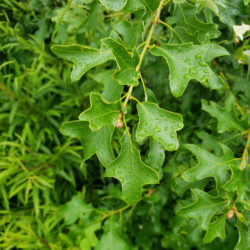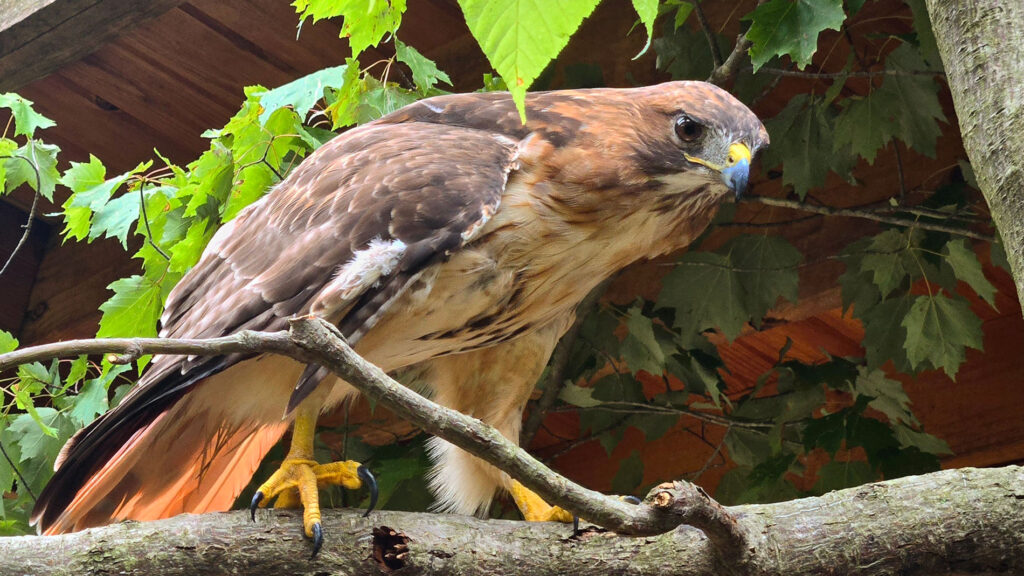
We’re shining a light on early successional habitat in this third blog post in a three-part series all about our local PA habitats. Read our September blog post, Grasslands, and our October blog post, Forests.
What is this habitat?
In our previous blog on grasslands, we mentioned how many grasslands, especially in Pennsylvania, occur because of a “disturbance event.” These disturbances are essentially the thinning out or removal of mature trees from a system by various events such as fire, tree specific disease, forestry practices, etc., which allow herbaceous plants, such as grasses, to become the dominant plant life in that area. If this area continues to experience routine disturbances, then the grassland will persist. However, if the area does not experience regular disturbance events, then the process of forest succession can begin. Given enough time, bushes will begin to grow and start to become numerous, a stage often referred to as “scrub, shrub, or scrubland.” If more time is allowed to pass, then fast growing/sunlight tolerant/relatively short-lived trees may begin to appear, often referred to as “early successional species.” These taller species add another layer of height to the scrub layer, creating what is known as a “young forest.” If even more time is allowed to pass without disturbance, then other, larger, slower-growing tree species will eventually grow above those and create a canopy, and we will arrive back at a mature forest.
The scrub and early-forest stages often occur in the transition zones where a grassland is being maintained through disturbance, but those disturbances are not happening as frequently across the entirety of the habitat, creating a mosaic of different plant communities between the grassland and the adjacent forest. These transitionary zone habitat types are referred to as “early successional habitat” (ESH) and while this term can be used to describe a variety of habitat transitions, for the purpose of this blog, we will be using this term to refer to the transition from grassland to forest.
Why is it important?

Early successional habitat is one of the most diverse habitats we have here in Pennsylvania. Regarding plant life, we see species from both the grassland habitat and forest habitat represented, with the proportions shifting as the area ages. The lack of mature trees allows for an abundance of sunlight to be present in these spaces, benefiting a variety of species such as Fireweed, Devil’s Walking Stick, Scrub Oak, and our state flower, the Mountain Laurel. This diverse plant community also provides shelter and foraging opportunities that benefit many wildlife species such as Yellow Warblers, Eastern Cottontail, and our state bird, the Ruffed Grouse. ESH is beneficial as a wind break, slowing the fast-moving air as it travels from the open grasslands, through the thick layer of shrubs and small trees, before reaching the larger trees. This reduces the risk of those larger periphery trees being blown over and minimizes the risk of those trees harming our homes and infrastructure. This habitat also helps with erosion through similar means. As water flows through a forest or open space, the dense roots and labyrinth of stems slow the water entering and exiting each habitat type, reducing runoff and keeping our waterways cleaner.
Where can we find this habitat locally?
Unlike forests and grasslands, there aren’t many parks that are designated in Pennsylvania to showcase these transitional zones specifically, which can make finding quality early successional habitat difficult. However, you can find small examples of these habitats in many urban settings, such as within low-mow areas near tree lines, in and around clearings created for power lines, and around other infrastructure that allows for plant growth. If you are looking to see larger examples of this habitat, they can be found by searching for state parks and state game lands that specifically manage for wildlife species who benefit from this habitat, such as Eastern Cottontail, Ruffed Grouse, and American Woodcock. Local areas with that intent are State Game Lands 176, known locally as the Scotia Barrens, and State Game Lands 103 near Black Moshannon State Park. Shaver’s Creek is also home to various examples of ESH that can be seen on our Woodcock Trail, located just off of Red Rose Road, and around the perimeter of our Hawk’s View Meadow, which can be accessed from a number of trails located near our Visitor Center. Stop in to grab a map, and someone will be glad to help you find the best route for your habitat adventure!
Who relies on this habitat?

Early successional habitat provides opportunities for a vast array of plant and animal species who do not perfectly fit the grassland or forest species’ roles. Many plant species, such as Poke Milkweed, prefer not to be in the direct sunlight of a grassland like many other milkweed species, but also prefer more sunlight than is often provided by a closed canopy forest. These plants thrive in the “goldilocks zone” provided by ESH, providing food for pollinators and caterpillars, which, in turn, are prey for insect hunters such as Carolina Mantis. The dense network of stems provided by bushes, such as Spice Bush, makes it difficult for larger animals to navigate through, providing safe passageways for small rodents and reptiles such as the Eastern Ratsnake. All the small animals moving amongst the shrubs are attractive prey items for rodent- and reptile-hunting birds such as Red-tailed Hawks, who can find the perfect vantage point on top of some of the smaller-growing trees such as Scrub Oak.
Shaver’s Creek is home to a number of resident animals that serve as educators and ambassadors of ESH. From our resident Carolina Mantis and Eastern Ratsnakes in the Litzinger Herpetarium to our resident Red-tailed Hawk in our Klingsberg Aviary, you can come get an up-close look at these critical species firsthand. Visit on your own or stop in during our free Meet the Creek programs on Saturdays and Sundays to learn all about them and more from our Wildlife Care Team. Forming deep connections with the species that rely on early successional habitat is just one way to begin to become a champion for these spaces.

What conservation actions can we take to support this habitat and related species?
Many of us live in open spaces or forested spaces, which makes early successional habitat one of the most accessible habitats we can create in our backyards. Many of the plants that make up our urban environments tend to be a collection of flowering herbaceous plants, bushes, and small trees which make up the typical structure of an early successional habitat. However, as we’ve discussed, it isn’t just the types of plants, it’s the specific plants and animals that truly make these beneficial habitats.
Often, the plants chosen in our communities are non-native plants that may add aesthetic value but are of little value to wildlife or are potentially harmful exotics, such as Japanese Barberry, which have been shown to increase tick numbers while also having a limited benefit to resident wildlife. This is why, if you want to start incorporating ESH elements into your homes, we recommend choosing native flowers, bushes, and small trees when making landscaping decisions. There are so many beneficial and attractive native plant options to fit any aesthetic, and Penn State Extension has many resources on ways to get started. While the idea of planting a few native bushes may seem like a small act, at Shaver’s Creek we believe that small actions can make a big impact. If your neighbor also chooses native shrubs, and their neighbor chooses some native shrubs, we can create pockets of early successional habitat that benefit our local wildlife and add beauty to our communities!
